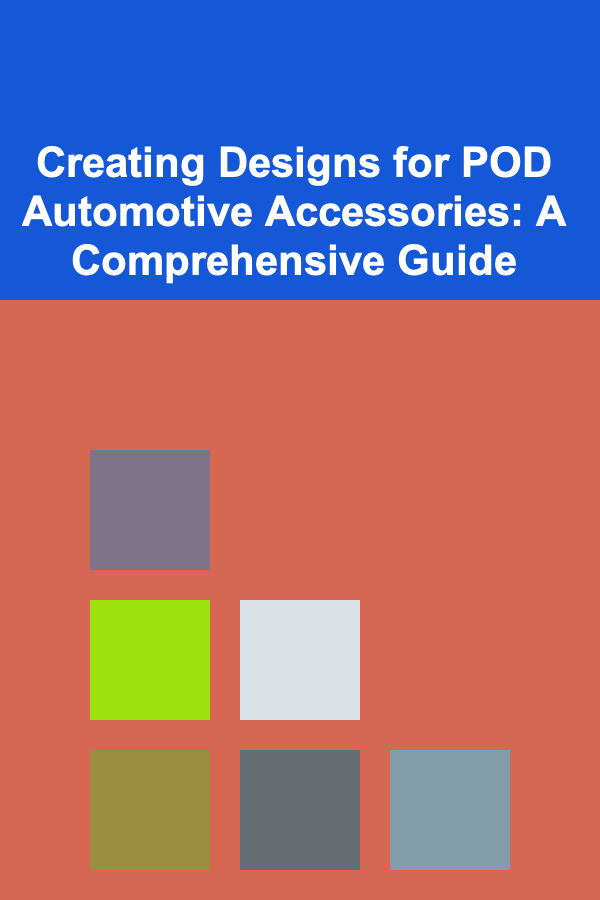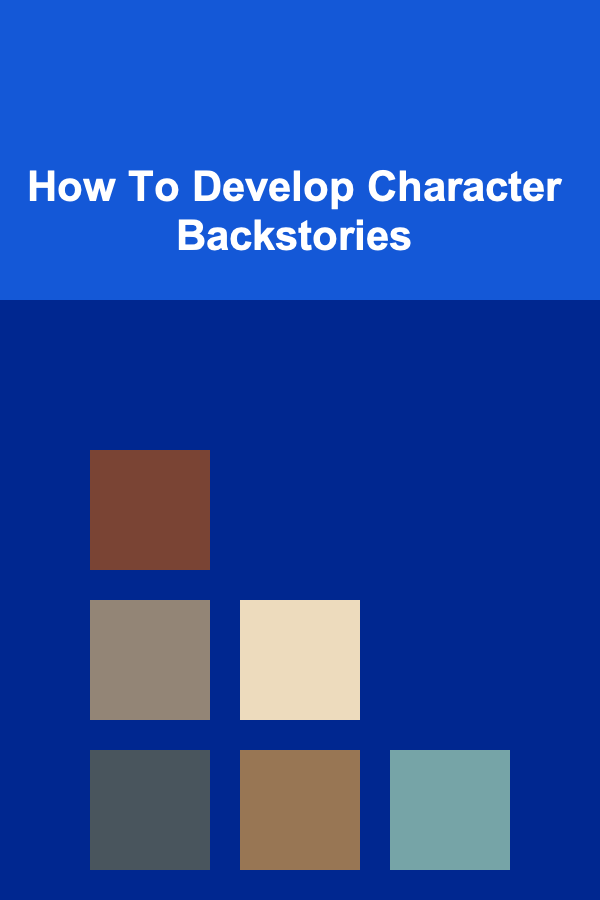
Creating Designs for POD Automotive Accessories: A Comprehensive Guide
ebook include PDF & Audio bundle (Micro Guide)
$12.99$10.99
Limited Time Offer! Order within the next:

The Print-on-Demand (POD) industry is booming, and automotive accessories represent a significant niche with untapped potential. Car enthusiasts are always looking for ways to personalize their vehicles and express their individuality, making this market ripe for creative designs. However, success in this area requires a strategic approach, blending artistic talent with market awareness and technical know-how. This guide provides a detailed exploration of how to create compelling designs for POD automotive accessories, covering everything from initial concept to final product launch.
I. Understanding the Automotive Accessory Market
Before diving into design creation, it's crucial to understand the landscape of the automotive accessory market. This involves identifying target audiences, analyzing trends, and researching competitors.
A. Identifying Your Target Audience
The automotive world encompasses a diverse range of interests. Consider these potential target audiences:
- Classic Car Enthusiasts: Passionate about vintage vehicles, restoration, and preservation. Designs might feature classic car models, historical racing events, or retro logos.
- Off-Roading/4x4 Adventurers: Interested in rugged terrain, outdoor adventures, and modifications for enhanced performance. Designs could incorporate off-road landscapes, topographical maps, or vehicle silhouettes navigating challenging trails.
- Sports Car Aficionados: Focused on speed, performance, and aesthetics. Designs might showcase iconic sports car models, racing stripes, or abstract representations of speed and power.
- Truck Owners: Seeking functionality, durability, and customization options. Designs could feature truck silhouettes, outdoor themes, or humorous slogans related to truck ownership.
- General Car Owners: Looking for practical and stylish accessories to enhance their daily driving experience. Designs might include personalized monograms, inspirational quotes, or abstract patterns.
- Specific Car Brand Loyalists: Devoted to a particular car manufacturer (e.g., BMW, Mercedes-Benz, Toyota). Designs might incorporate the brand's logo, historical models, or related imagery (within legal and ethical boundaries).
Understanding your target audience allows you to tailor your designs to their specific preferences, increasing the likelihood of sales.
B. Analyzing Current Trends
Staying up-to-date with current trends is essential for creating designs that resonate with consumers. Explore these avenues for trend research:
- Online Marketplaces (Etsy, Amazon, Redbubble): Analyze best-selling automotive accessories and identify recurring themes, styles, and color palettes.
- Social Media (Instagram, Pinterest, Facebook): Follow automotive-related accounts, influencers, and groups to stay informed about trending hashtags, design aesthetics, and popular accessories.
- Automotive Blogs and Magazines: Read articles and reviews to learn about new products, design innovations, and emerging trends in the automotive industry.
- Search Engine Optimization (SEO) Tools: Utilize tools like Google Trends or Semrush to identify trending keywords and search terms related to automotive accessories.
Consider trends like minimalist designs, vintage aesthetics, personalized elements, and environmentally conscious themes. However, avoid blindly following trends; instead, adapt them to your unique style and target audience.
C. Competitive Analysis
Researching your competitors helps you identify opportunities to differentiate your designs and carve out a unique niche in the market. Analyze:
- Competitors' Product Offerings: Identify the types of automotive accessories they offer (e.g., seat covers, floor mats, steering wheel covers, sunshades) and their pricing strategies.
- Competitors' Design Styles: Analyze their design aesthetics, color palettes, and overall brand identity.
- Competitors' Marketing Strategies: Observe how they promote their products through social media, email marketing, and online advertising.
- Customer Reviews: Read customer reviews to identify areas where competitors excel and areas where they could improve.
Use this information to identify gaps in the market and develop designs that offer a unique value proposition.
II. Designing for POD Automotive Accessories: Practical Considerations
Designing for POD automotive accessories requires a nuanced understanding of the specific product, its dimensions, and printing limitations. This section explores the practical considerations for creating effective designs.
A. Choosing the Right Automotive Accessory
The type of automotive accessory you choose will significantly impact your design approach. Here are some popular options:
- Seat Covers: Offer a large canvas for intricate designs and patterns. Consider factors like seat size, shape, and material compatibility.
- Floor Mats: Provide a smaller canvas, often requiring simpler and more durable designs. Think about the placement of the design to avoid wear and tear.
- Steering Wheel Covers: Demand designs that are comfortable to grip and visually appealing. Consider the curvature of the steering wheel and the placement of the design to avoid distortion.
- Sunshades: Offer a large and visible area for eye-catching designs. Think about the visibility of the design from both inside and outside the vehicle.
- Car Coasters: Small and functional, requiring simple and impactful designs. Consider the size and shape of the coaster and the placement of the design to maximize visibility.
- Keychains: Offer a small but versatile space for personalized designs and logos. Consider the material of the keychain and the durability of the design.
- Bumper Stickers: A classic way to express personality, ideal for bold graphics and humorous slogans. Ensure the design is weather-resistant and easy to read.
- Window Decals: Allow for creative expression on windows, consider visibility and adherence properties.
Select accessories that align with your design skills and target audience preferences.
B. Understanding Product Dimensions and Templates
Each POD platform provides specific templates and dimensions for its products. It is absolutely crucial to download and utilize these templates to ensure that your designs fit correctly and are printed accurately. Pay attention to:
- Print Area: The maximum area where your design can be printed.
- Bleed Area: The extra space around the print area that ensures your design extends to the edges of the product after trimming.
- Safe Zone: The area within the print area where you should place important design elements (e.g., text, logos) to prevent them from being cut off during printing.
- Resolution Requirements: The minimum resolution (DPI) required for high-quality printing.
- File Format Requirements: The accepted file formats (e.g., JPG, PNG, SVG).
Failing to adhere to these specifications can result in distorted, blurry, or incomplete designs.
C. Choosing the Right Colors and Materials
The choice of colors and materials can significantly impact the visual appeal and durability of your designs. Consider these factors:
- Color Psychology: Understand the emotions and associations evoked by different colors. For example, red can represent passion and energy, while blue can represent calmness and trust.
- Color Harmony: Use color palettes that are visually appealing and harmonious. Explore color theory principles like complementary colors, analogous colors, and triadic colors.
- Material Compatibility: Choose colors that complement the material of the automotive accessory. For example, bright colors may look more vibrant on light-colored fabrics, while darker colors may be more suitable for durable materials like rubber or metal.
- Printing Limitations: Be aware of any limitations in the printing process, such as color matching or the ability to print gradients accurately.
- Durability: For accessories like floor mats or steering wheel covers, consider using colors and materials that are resistant to fading, scratching, and wear and tear.
Research the specific materials used by your POD provider and select colors that will produce the best results.
D. Optimizing Designs for Printing
Optimizing your designs for printing is essential for ensuring high-quality results. Consider these best practices:
- Use High-Resolution Images: Ensure that all images used in your designs are at least 300 DPI (dots per inch). This will prevent pixelation and blurring.
- Use Vector Graphics: Whenever possible, use vector graphics (e.g., SVG files) for logos, text, and illustrations. Vector graphics are scalable without losing quality.
- Simplify Complex Designs: Avoid overly complex designs with too many details, as these may not print well on certain materials.
- Use Appropriate File Formats: Save your designs in the appropriate file format specified by your POD provider (e.g., JPG, PNG, SVG).
- Test Print Your Designs: Before launching your products, order sample prints to ensure that your designs look as expected. This will allow you to identify any issues and make necessary adjustments.
Paying attention to these details will help you create designs that are visually appealing and accurately reproduced on the final product.
III. Design Ideas and Inspiration for Automotive Accessories
Generating fresh and innovative design ideas is crucial for standing out in the competitive POD market. This section offers a range of design ideas and inspiration for various automotive accessories.
A. Seat Cover Design Ideas
- Personalized Monograms: Feature the vehicle owner's initials or name in a stylish font.
- Automotive Logos: Incorporate the logos of popular car brands (with appropriate licensing and permission).
- Classic Car Illustrations: Showcase detailed illustrations of iconic classic car models.
- Racing Stripes and Patterns: Utilize bold racing stripes or geometric patterns for a sporty look.
- Landscape Scenes: Feature panoramic landscape scenes, such as mountains, forests, or beaches.
- Animal Prints: Incorporate animal prints like leopard, zebra, or tiger for a bold and unique style.
- Abstract Art: Create abstract designs using colors, shapes, and patterns to evoke a sense of movement and energy.
- Quilted Patterns: Design seat covers with traditional or modern quilted patterns for a luxurious feel.
- Fandom Inspired: Designs inspired by movies, TV shows, or video games.
B. Floor Mat Design Ideas
- Tire Tread Patterns: Mimic the patterns of tire treads for a rugged and functional look.
- Vehicle Silhouettes: Feature silhouettes of different vehicle types, such as trucks, sports cars, or motorcycles.
- Humorous Slogans: Incorporate humorous slogans related to driving or car ownership. Examples: "My Other Ride is a Rocket," "I Brake for Tacos," "Powered by Caffeine."
- Minimalist Designs: Use simple and clean designs with geometric shapes and minimal colors.
- Map Designs: Feature topographical maps of popular driving routes or landmarks.
- Customizable Welcome Mats: Allow customers to add their own names or addresses to the design.
- Sport Team Logos: If licensed, incorporate sport team logos and colors.
C. Steering Wheel Cover Design Ideas
- Leather Textures: Create designs that mimic the look and feel of genuine leather.
- Carbon Fiber Patterns: Incorporate carbon fiber patterns for a sporty and high-tech look.
- Ergonomic Designs: Create designs that provide a comfortable and secure grip.
- Personalized Grip Sections: Allow customers to customize the grip sections with their initials or preferred colors.
- Contrast Stitching: Feature contrast stitching details to add visual interest.
- Temperature-Regulating Materials: Utilize materials that help regulate the temperature of the steering wheel for comfortable driving in all weather conditions.
D. Sunshade Design Ideas
- Reflective Materials: Utilize reflective materials to maximize sun protection.
- Cartoon Characters: Feature popular cartoon characters or mascots.
- Scenic Landscapes: Showcase stunning scenic landscapes, such as sunsets, mountains, or beaches.
- Optical Illusions: Create optical illusions that add a unique and eye-catching touch.
- Humorous Quotes: Incorporate humorous quotes about the sun, driving, or summer. Examples: "Keep Calm and Drive On," "Sun's Out, Guns Out," "My Car is Cooler Than Yours."
- Customizable Photos: Allow customers to upload their own photos to create personalized sunshades.
- Pop Culture References: Designs referencing trending shows, music or events.
E. Car Coaster Design Ideas
- Automotive Brand Logos (Licensed): Subtle and stylish integration of brand logos.
- Drink-Related Slogans: Fun and catchy slogans related to beverages.
- Geographic Coordinates: A nod to a favorite driving destination.
- Zodiac Signs: A personalized touch for astrology enthusiasts.
- Geometric Patterns: Clean and modern designs.
- Floral Designs: For a touch of elegance.
IV. Tools and Resources for Automotive Accessory Design
A variety of tools and resources can assist you in creating professional-quality designs for POD automotive accessories. This section outlines some of the most useful options.
A. Design Software
- Adobe Photoshop: Industry-standard software for photo editing and graphic design. Ideal for creating realistic textures, manipulating images, and adding effects.
- Adobe Illustrator: Vector-based design software perfect for creating logos, illustrations, and typography. Its scalability makes it ideal for printing on various surfaces.
- Canva: User-friendly online design tool with a wide range of templates and design elements. Suitable for creating simple designs and marketing materials.
- GIMP (GNU Image Manipulation Program): Free and open-source image editor with features similar to Photoshop. A good option for budget-conscious designers.
- Inkscape: Free and open-source vector graphics editor similar to Illustrator.
Choose the software that best suits your design skills and budget.
B. Online Resources
- POD Platform Design Guides: These platforms often provide specific design guides and tutorials for creating optimized files.
- Creative Market: A marketplace for design assets, including fonts, graphics, templates, and mockups.
- Envato Elements: A subscription-based service offering unlimited access to a vast library of design assets.
- Unsplash and Pexels: Websites offering free high-resolution stock photos.
- Color Hunt: A website for discovering and creating color palettes.
- Coolors: A fast color scheme generator.
- Designspiration: A visual search engine for discovering design inspiration.
C. POD Platforms
Several POD platforms cater to the automotive accessory market. Research and choose a platform that aligns with your product offerings and target audience. Some popular options include:
- Printful: Offers a wide range of automotive accessories, including seat covers, floor mats, and sunshades.
- Redbubble: Features a large marketplace for independent artists and designers, with a growing selection of automotive accessories.
- Society6: Known for its high-quality prints and unique artist collaborations.
- Zazzle: Allows for extensive customization options and offers a wide range of automotive accessories.
Compare pricing, product quality, printing options, and shipping times before selecting a POD platform.
V. Marketing and Promotion Strategies
Creating compelling designs is only half the battle. Effective marketing and promotion are essential for driving traffic to your online store and generating sales.
A. Social Media Marketing
- Instagram: Showcase your designs through visually appealing photos and videos. Use relevant hashtags to reach a wider audience.
- Facebook: Create a Facebook page for your brand and share updates, promotions, and behind-the-scenes content.
- Pinterest: Create visually appealing pins showcasing your designs and link them to your online store.
- TikTok: Create short, engaging videos showcasing your designs in action.
Engage with your audience, respond to comments, and run contests to build brand awareness.
B. Email Marketing
Build an email list and send regular newsletters to your subscribers, featuring new designs, promotions, and exclusive offers.
C. Search Engine Optimization (SEO)
Optimize your product listings and website content with relevant keywords to improve your search engine rankings. Research keywords related to automotive accessories and incorporate them into your product titles, descriptions, and tags.
D. Paid Advertising
Consider using paid advertising platforms like Google Ads or Facebook Ads to reach a wider audience and drive traffic to your online store. Target your ads based on demographics, interests, and behaviors.
E. Influencer Marketing
Partner with automotive influencers to promote your designs to their followers. Identify influencers who align with your brand and target audience and offer them free products or compensation in exchange for their promotion.
F. Content Marketing
Create valuable content related to automotive accessories, such as blog posts, articles, or videos. This will help you attract and engage your target audience and establish yourself as an authority in the industry. Examples: "Top 10 Seat Cover Designs for [Year]," "How to Choose the Right Floor Mats for Your Car," "DIY Car Customization Ideas."
VI. Legal Considerations
When designing for POD, it's essential to respect intellectual property rights and avoid copyright infringement. Here are some key legal considerations:
A. Copyright
Do not use copyrighted images, logos, or text without permission from the copyright owner. This includes images found online, characters from movies or TV shows, and brand logos.
B. Trademarks
Avoid using trademarks without permission from the trademark owner. This includes brand names, slogans, and logos.
C. Licensing
If you want to use copyrighted or trademarked material, obtain the necessary licenses from the copyright or trademark owner. This may involve paying a fee or agreeing to certain terms and conditions.
D. Originality
Create original designs whenever possible. This will minimize the risk of copyright infringement and help you stand out from the competition.
VII. Conclusion
Creating successful designs for POD automotive accessories requires a combination of creativity, market knowledge, and technical skills. By understanding your target audience, analyzing trends, optimizing your designs for printing, and implementing effective marketing strategies, you can carve out a profitable niche in this growing market. Remember to always respect intellectual property rights and create original designs that reflect your unique style and vision. With dedication and perseverance, you can turn your passion for automotive design into a thriving POD business.

How to Create a Welcoming Entryway When Staging Your Home
Read More
How to Make Money Online as a Data Entry Clerk
Read More
How to Make the Most of Limited Closet Space
Read More
Top Affordable Alternative Transportation Options to Save Money on Travel
Read More
How To Develop Character Backstories
Read More
Understanding the Life Cycle of Jellyfish: A Deep Dive
Read MoreOther Products

How to Create a Welcoming Entryway When Staging Your Home
Read More
How to Make Money Online as a Data Entry Clerk
Read More
How to Make the Most of Limited Closet Space
Read More
Top Affordable Alternative Transportation Options to Save Money on Travel
Read More
How To Develop Character Backstories
Read More